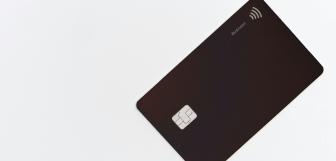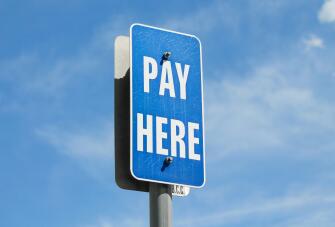EMV meaning: What it is and why it matters for secure payments
Let's take a trip back to 2015. "Uptown Funk" was the song everyone couldn't get enough of, metallic skirts were super trendy, and the Apple Watch was the newest gadget on the block.
But there was something else making waves that year. Target, the retail giant, had to pay $10 million to settle a class-action lawsuit because of a huge customer data breach back in 2013. This was part of a bigger problem – credit card fraud had jumped by 40% between 2004 and 2010. If you've ever had your identity stolen, you know how scary this can be.
While EMV technology, which was designed to protect our payments, was already helping combat these issues in other parts of the world, events like these pushed the U.S. to finally join the safe payments party (sounds like a blast, right?) So, the top dogs in the credit card world got together and introduced EMV to the states.
Now, it's 2024, and using chip-enabled credit cards is just how things are done. But if you're still getting up to speed or need a little refresher, don't worry – we've got you covered. Here's all you need to know about EMV technology. Let's get started!
What does EMV stand for?
EMV stands for Europay, Mastercard, and Visa – the big names behind this new credit card payment standard. It all started in Europe and quickly spread worldwide. EMV cards have a tiny microchip that adds extra security when you "dip" the card, helping to protect against fraud. This is known as a chip and pin transaction. Plus, it's compliant with other payment methods, like near-field communication (NFC) transactions (Samsung Pay or Apple Pay). So, whether you're dipping or tapping, EMV's involved.
What is an EMV chip card?
An EMV chip card has both a tiny microprocessor chip embedded in the card and the traditional magnetic strip on the back. EMV cards go by a bunch of different names, such as:
- Smart card
- Chip card
- Smart-chips card
- Chip-enabled smart card
- Chip and signature cards
- EMV chips
- EMV smart card
- EMV card
Despite the many names, these cards all operate the same way.
How does EMV chip technology work in credit and debit cards?
How do EMV chip cards work, you ask? They're super secure because it's almost impossible to clone an EMV credit card or debit card. Every time you dip a chip card, it creates a unique transaction code. Those old school magnetic stripe cards stored your info the same way every time, making them easy targets for hackers (not good). The chip on an EMV card adds an extra layer of security by mixing things up each time.
When you use an EMV card, the card and the point-of-sale (POS) system team up to create a new, unique token for each dip. This token encrypts your transaction data, which is then decoded by the card issuer or terminal to make sure you have enough funds.
Using an EMV card means you dip it vertically, chip first, into an EMV-enabled reader, instead of swiping it like a magnetic stripe card. The process might take a bit longer because of EMV's encryption security.
Once your account is verified to have enough funds, the transaction is completed. And here's the best part: even if a hacker manages to steal info from one transaction, it's useless for future transactions because a new token is created every time you use your EMV card. Take that, hackers!
Importance of EMV cards during payment processing
Here's why EMV is the true MVP when talking about payment processing:
Decrease of fraud and counterfeiting
EMV cards make it way harder for fraudsters to do their thing. With that nifty little chip, each transaction gets its own unique code, making it almost impossible to clone.
Meeting broader security and privacy regulations
These cards help businesses stay on top of broader security and privacy rules. Think of them as an extra layer of protection for both you and your customers.
Reduce credit or debit card chargebacks
With EMV cards, you're less likely to deal with chargebacks that occur from credit card fraud. This means fewer headaches and less money lost on disputed transactions.
Regulatory compliance with the EMV liability shift
In 2015, there was a big change in the rules. The EMV liability shift means if you don't use EMV technology and there's a fraudulent transaction, you're the one who has to pay up.
TIP:
Don't quite understand payment processing? Don't worry, we've got you covered. Check out How Does Payment Processing Work guide for everything you need to know.
Payment processing services made simple
Take integrated payments at one fixed rate, with no hidden fees - anywhere, any time.
Best practices for merchants to accept chip cards
In today's payment landscape, accepting EMV chip cards isn't just a good idea. Nope, it's absolutely essential for protecting your business and making sure that your customer's transactions are smooth and seamless. Here's how you can set yourself up for success:
Assess your current systems
First things first, take stock of what you've got. Look at your POS terminals. Make sure they're all set up to handle those EMV chip cards. Check if your POS software is up-to-date and can do its thing with EMV transactions securely (these are called EMV card readers and you'll need one). Also, see if your card readers - which are also known as card machines FYI - can handle both chip and swipe cards.
Select the right EMV reader
Now, if you haven't jumped on the EMV train yet, it's time to pick the right card reader. Look for one that's EMV-supported to ensure it can handle EMV chip cards securely. Consider factors like compatibility with your current retail POS system, ease of use for your staff and customers, and speed of an EMV transaction. It's also a really good idea to choose an EMV reader that can let you accept EMV cards and magnetic stripe cards, giving your customers the payment flexibility they want and need.
Implement employee training
So, you've got all the payment tech you need—yay! But hey, what's good tech without the awesome people who know how to use it? Time to get your team up to speed. Train them on how to handle those fancy EMV chip cards like a pro. Show them the ins and outs of the point of sale solution for EMV transactions. Make sure they know how to troubleshoot (because let's face it, tech can be a bit finicky sometimes). And of course, stress the importance of keeping things secure, gotta protect those customer deets after all.
Upgrade POS hardware and software
Alright, it's makeover time for your POS setup! Upgrading your POS hardware and POS software is key to being able to accept those EMV transactions without any issues. Make sure your POS system can handle EMV chip cards without a hitch. Think about speed (because no one likes waiting forever at the register) And, check for any security updates to keep those transactions safe from any sneaky fraudulent transactions.
Monitor credit and debit card transactions
Last, but definitely not least, it's time to play detective. You're basically channelling your inner Sherlock Holmes, except instead of solving mysteries, you're keeping a close eye on credit and debit card transactions. Watch for any unusual activity or transactions that seem out of place.
Stay alert to protect your customers' accounts from fraud and ensure everything runs smoothly at your end. Being proactive in monitoring transactions not only builds trust with your customers but also helps you nip any issues in the bud before they become a big deal.
FAQs about EVM chip technology
- Why are EMV payments more secure?
-
EMV payments protect your brilliant customers against fraud because each transaction gets a unique code, making it super hard for anyone to copy your card info.
- What is an EMV refund?
-
It's like hitting undo on a transaction. If you need to refund someone’s money back from an EMV payment, you can process an EMV refund right from your POS system.
- When did EMV become mandatory?
-
EMV hit the big time in the U.S. around 2015 when it became mandatory for businesses to step up their game and start accepting chip cards.
- What does EMV stand for in POS?
-
EMV stands for Europay, Mastercard, and Visa. In POS terms, it's all about making sure your point-of-sale system is ready to handle those secure chip card payments.




